If you truly use the Clossi approach in the spirit of “Defense First”, getting to 5k and beyond is perfectly possible. In fact, Clossius is a dan-level player and doesnt really do anything crazy and he doesnt hide the fact that he still stands by defense first.
That being said, I’m starting to need more tools to find strong middle game moves as I move towards 6k and beyond.
The question and answer to “am I OK” in the Standard Clossi approach is basically “Could I die”?
In the standard Clossi approach the remedies to you not being OK have to do with surviving:
- make a base
- run a way
- make eye shape
- play your vital point.
In the SDK clossi Approach, “Am I OK” has to do with recognizing fighting patterns:
In the SDK Clossi approach, we do not ask 1 question, “Am I OK”? instead we ask:
- could I die?
- Are there contact issues?
- Are there shape issues?
- Are there thickness issues?
Let’s work through these 1-by-1 with examples. We will ignore “can I die” because we have been doing that from 30k to 10k. Now it’s time to up our game.
Are there contact issues?
At move 66 in a game I played against a friend of mine, Lord Spoon, we see a contact issue in the upper left:
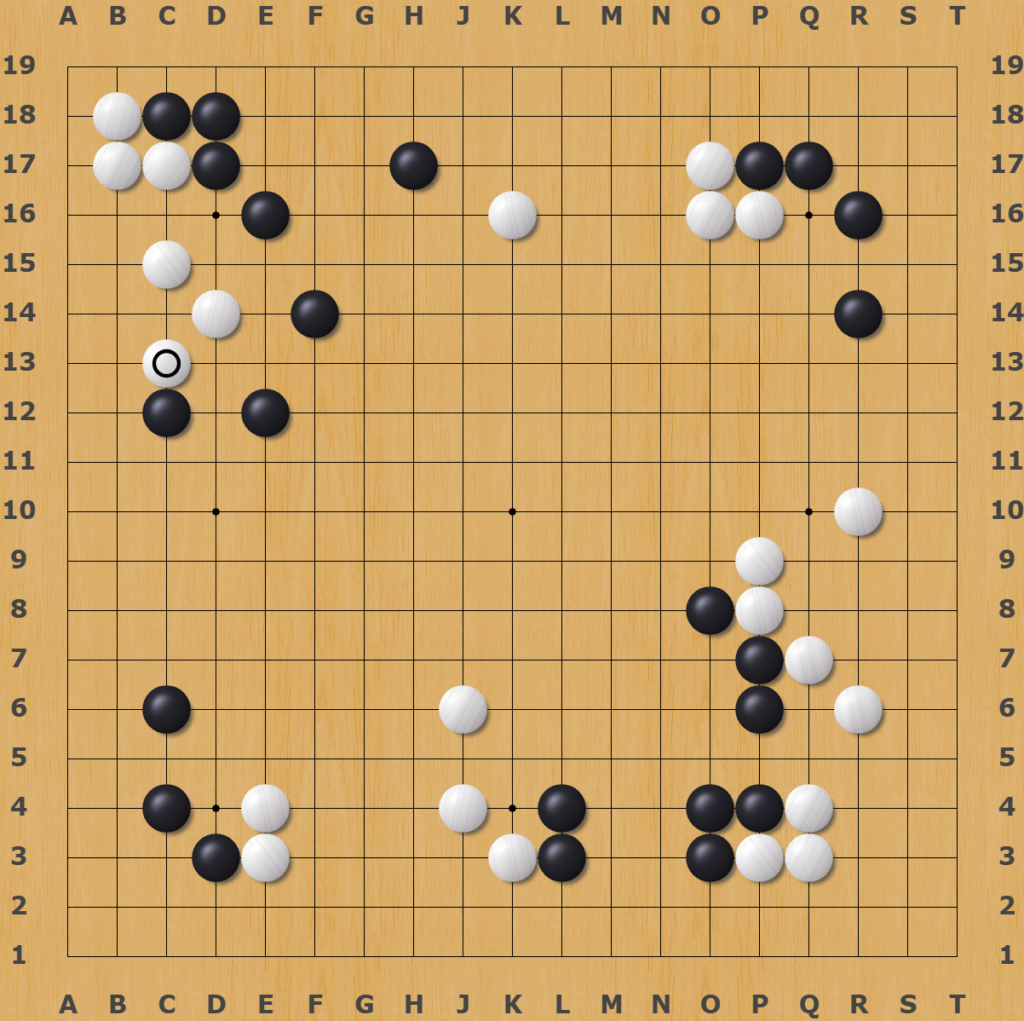
The proper moves by Black are B13 followed by D13.
Another good example of a contact issue occurred at move 52 in this game:
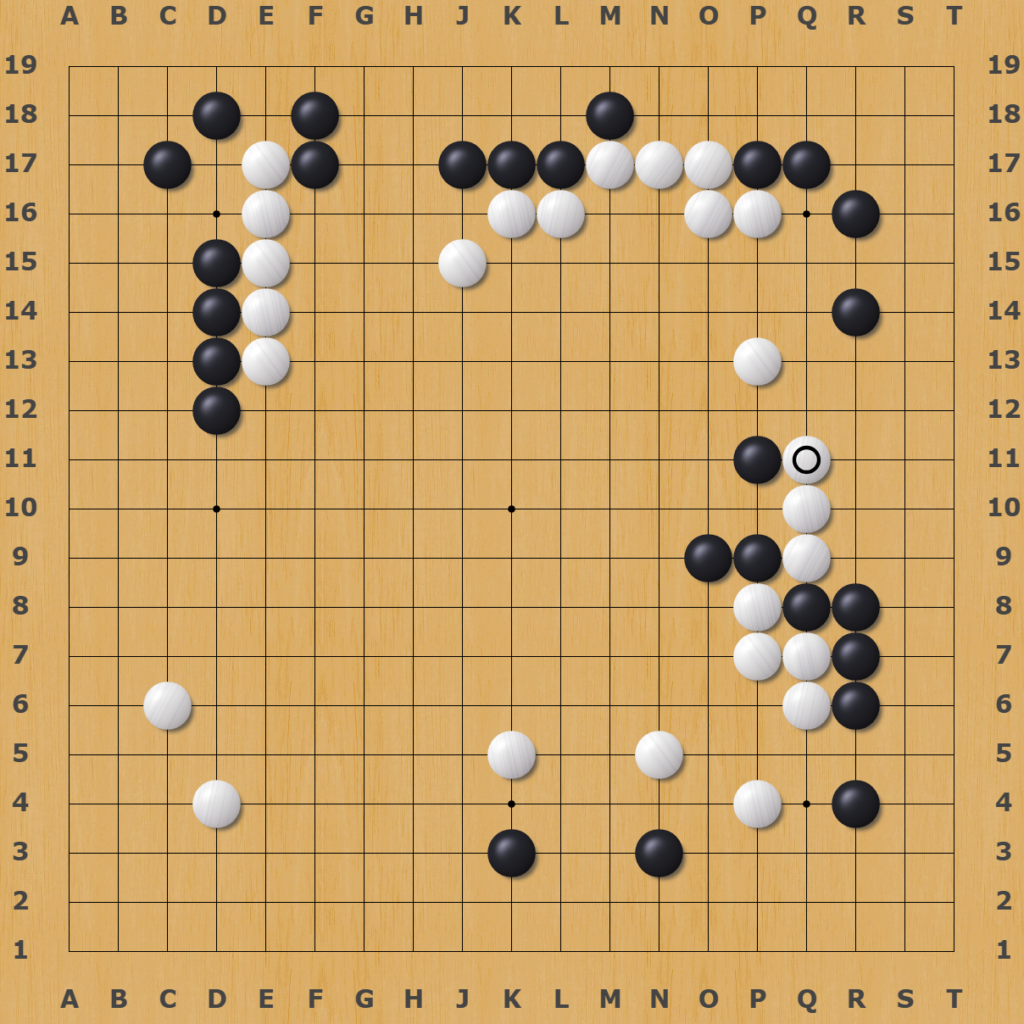
if I were using the standard Clossi approach, I would try for base (not possible) and then run away. But here we have better options once we realize this is a contact fight. A contact fight, according to Bruce Wilcox, is any move within radius 1 of your stone and it poses a direct threat to the well-being of your group and typically demands immediate attention.
Are there shape issues?
At move 84 in this game we see 2 powerful ways to exploit White’s shape:
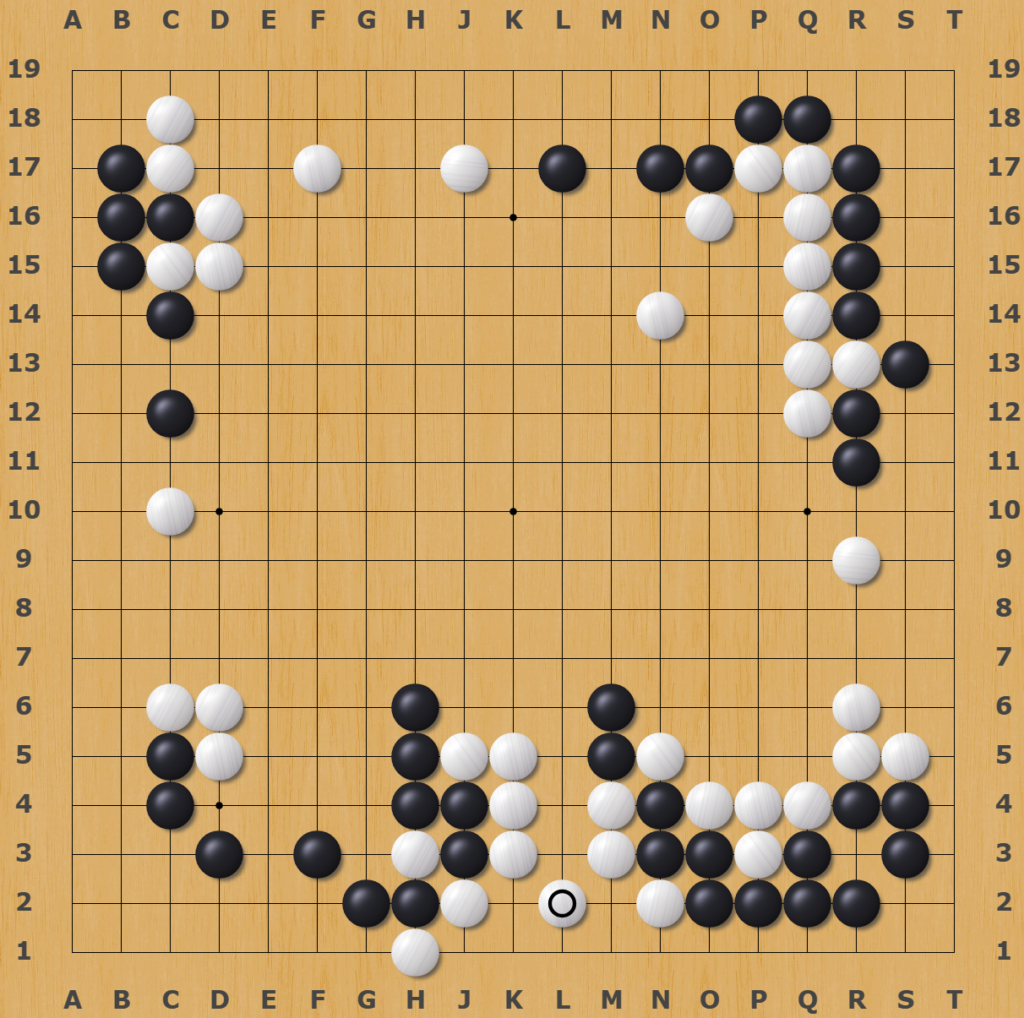
At move 56 in this game we see a shape issue:
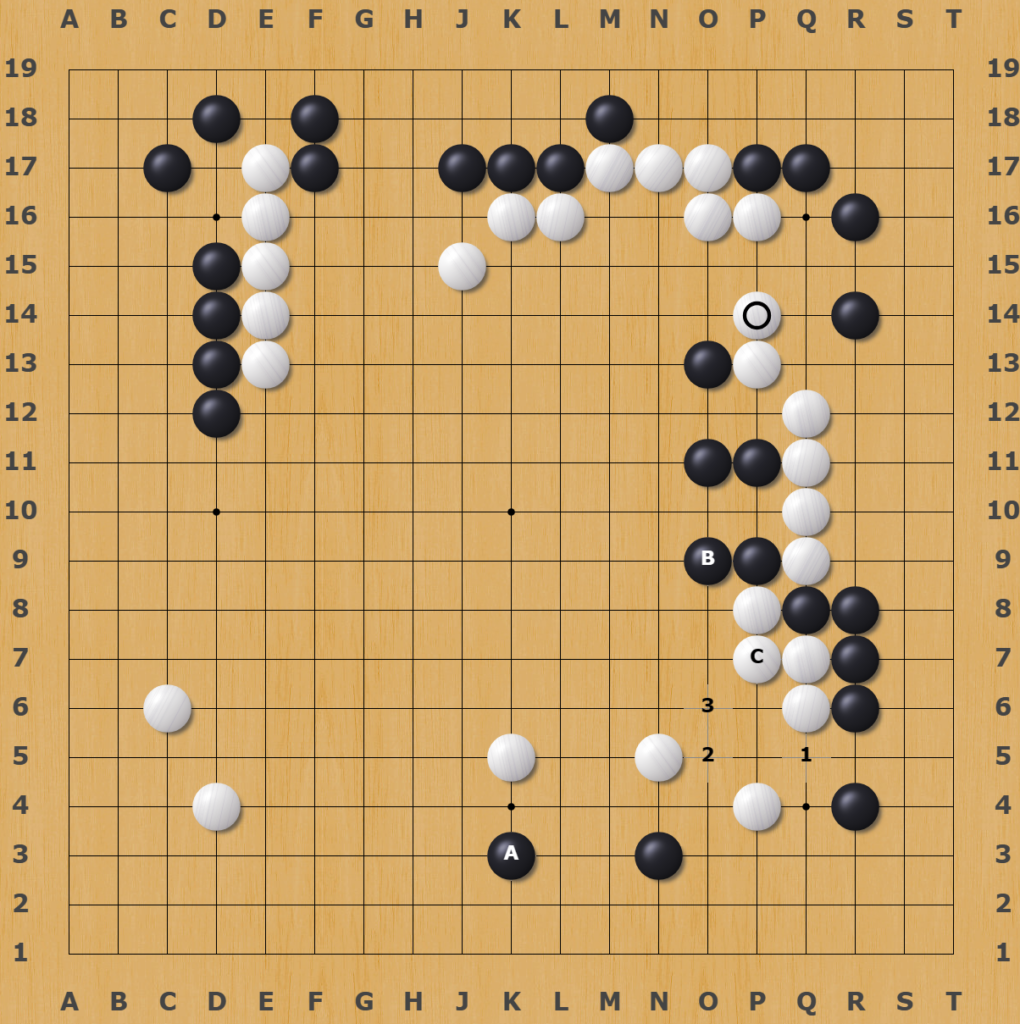
White’s stones in the lower right are connected by keimas. The correct move by Black is N7, threatening to cut apart the weak linkages at 1, 2 and 3.
In all fairness, these shape issues are taught in the Contact Fights section of the Bruce Wilcox material. so technically, these are contact issues as well.
Another example of exploiting knight moves can be seen here:
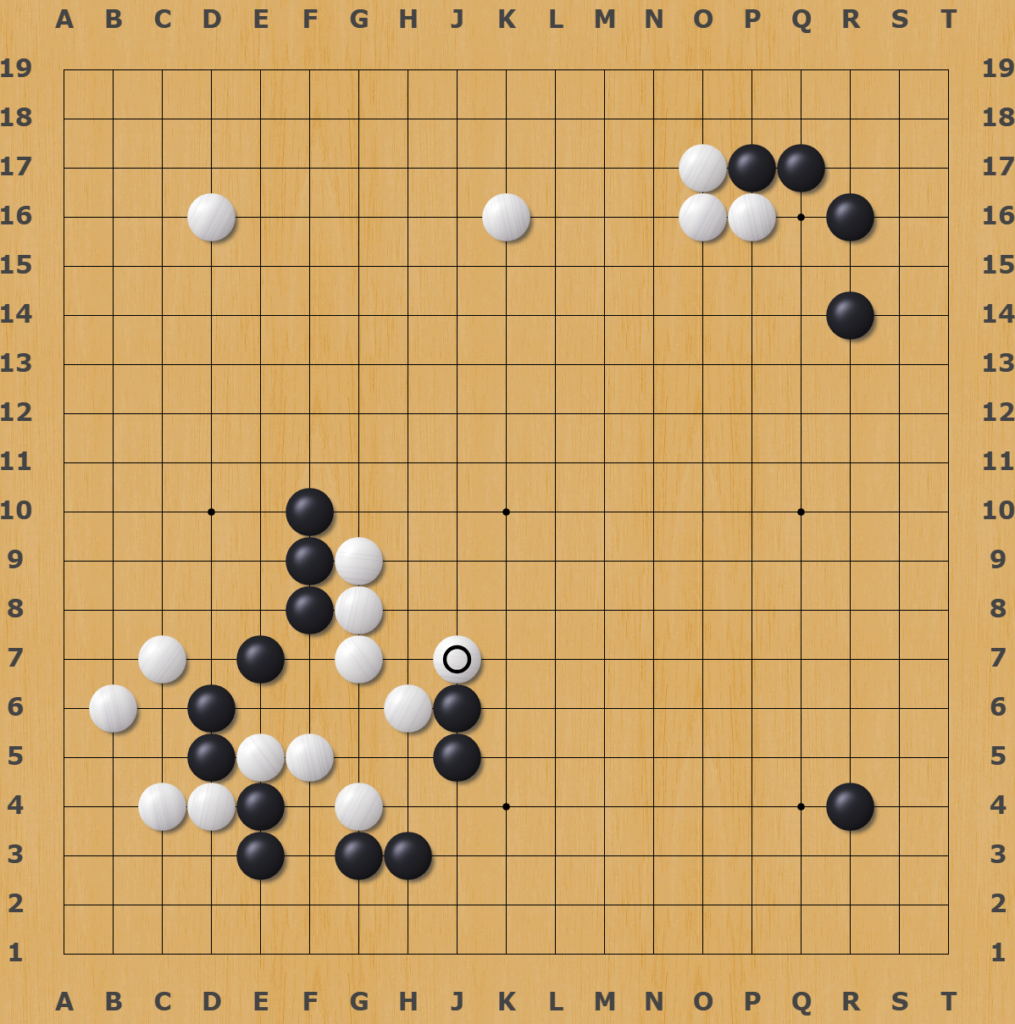
The F10 Black group does not look OK. I played a DDK clossi move in the game seeking base (C10). But using the additional questions, here we see a shape issue or 2:
- the C4 keima can be cut.
- the B6 kosumi has thickness issues versus the F10 Black group.
Therefore the strong move of B5 allows Black to fight for victory instead of settling for just getting base via C10.
Are there thickness issues?
The fact that stones radiate invisible power deep into opponent territory is quite striking.
move 48 in this game is a good example of thickness (with a bit of a shape/contact thingy too)
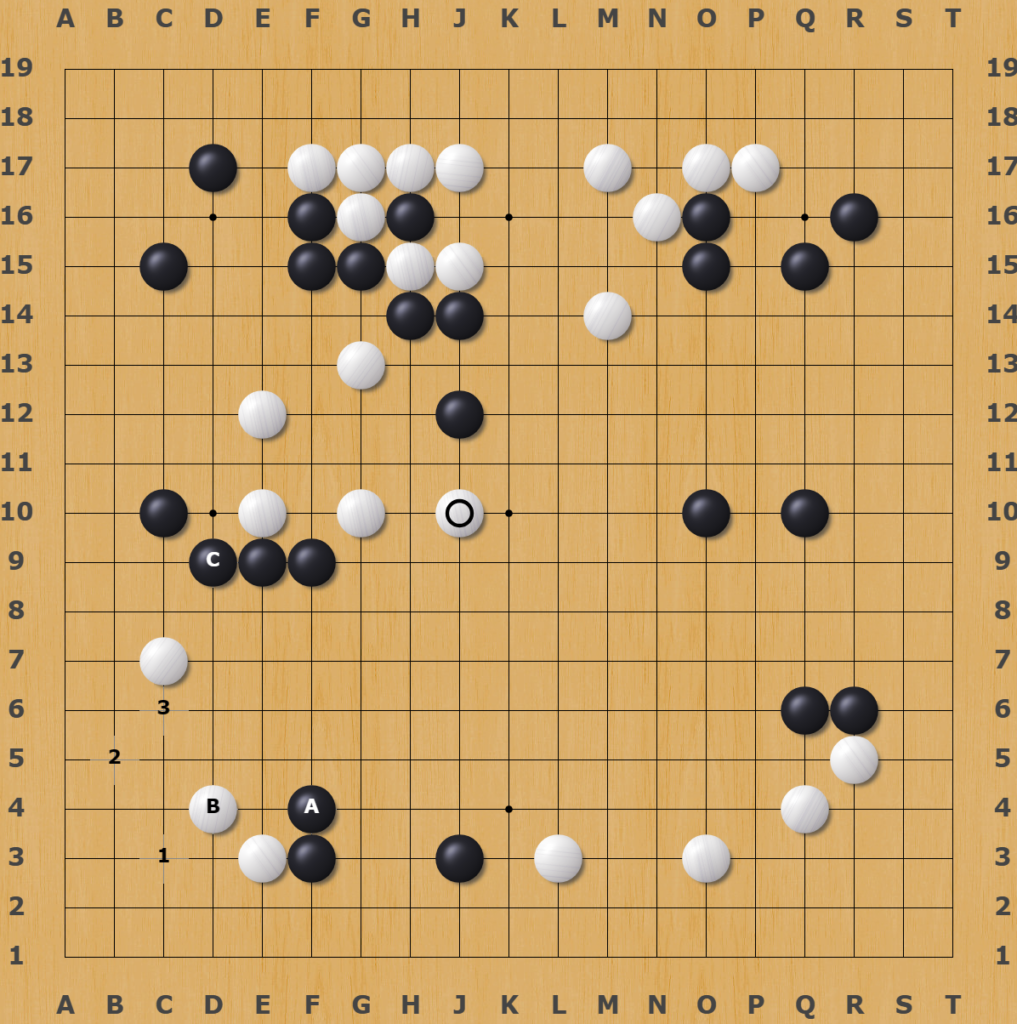
Let’s make a laundry list of the issues in the lower right:
- First there is a shape imbalance between group A and group B: group A is superior, with a common next play of ‘1’.
- ‘C’ is a thick group projecting to a least ‘3’…
Playing at ‘2’ allows us to get something in the corner… we either play 3 and use our thick group C against the C7 stone or we let ‘2’ die and exploit ‘1’… either way we can use the thickness imbalance or shape imbalance to our favor. A decent DDK clossi move in this position for Black would be C12, gaining a base for the D9 group and depriving White of the same base.
Conclusion
Each day I review my games and started noticing specific reasons to make a move. This article articulates 3 features of games that I’ve noticed (contact, shape and thickness) that imply different courses of actions than the standard Clossi approach.
I’ve had a couple of other cuts at revising the Clossi approach:
- Quantifying strength and weakness in a Baduk position by using Computer Programming Log Levels: New Vistas in the Clossi Approach to Move Selection – thee brane ov…. (may69.com)
- Revising the Clossi move approach questions – summing strengths and weaknesses objectively – thee brane ov…. (may69.com)
But I think that the current approach is much more workable. It will be fun to see how the games in those old examples can be played with this new methodology.